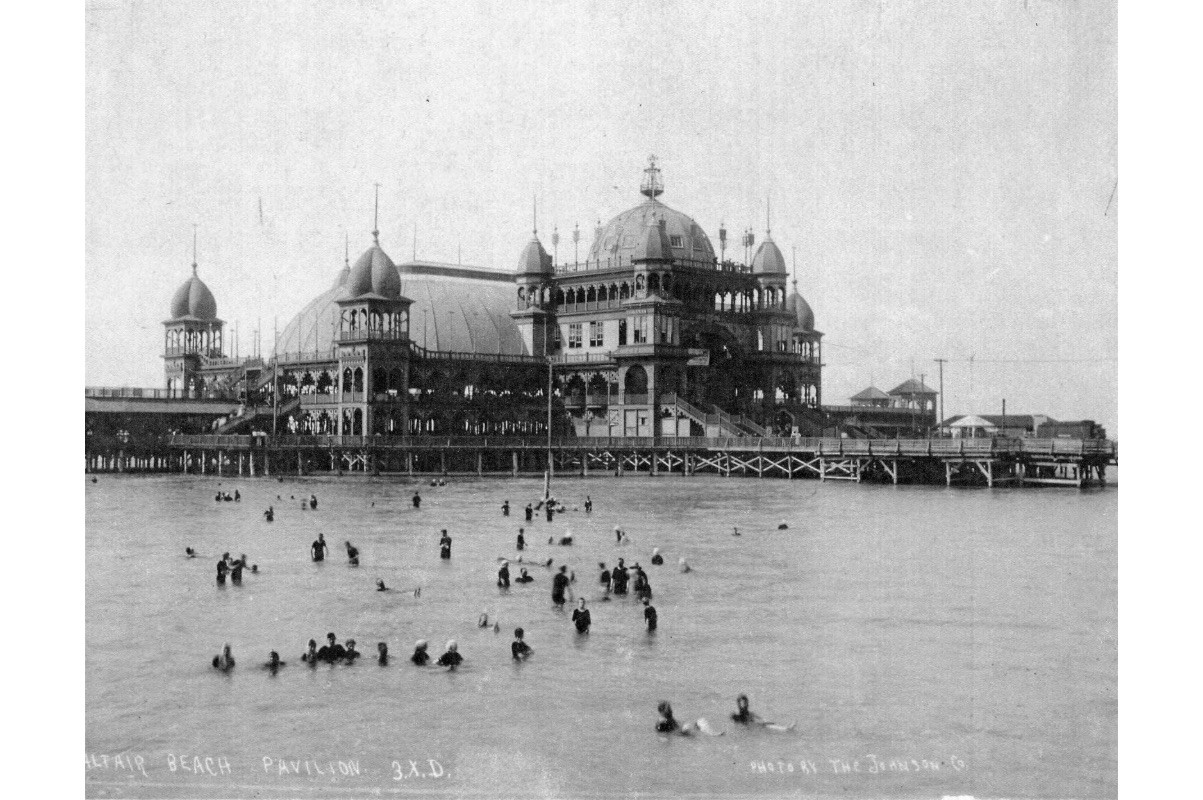Estimated read time: 4-5 minutes
This archived news story is available only for your personal, non-commercial use. Information in the story may be outdated or superseded by additional information. Reading or replaying the story in its archived form does not constitute a republication of the story.
LAKE POINT, Tooele County — The Great Salt Lake has fascinated the world for centuries. From the nomadic peoples living along the shoreline to the modern settlers in the valleys of the Wasatch Front.
And while the natural scope brings a lot of beauty, occasionally something man-made creates just as impressive a spectacle.
The Great Saltair would fit that description. You may have seen what looks more like a modern take on a palace from the Ottoman Empire, the roadside attraction venue sits just off I-80 near Lake Point.
"It is a strange place," said Chris Merritt, a state historic preservation officer.
He said that to speak about this strange, historic structure is first getting the history straight. Because, after all, the current building is only a descendant of the original.
"(It's just) festooned to look like the first two Saltair resorts."
It's fitting that a historian uses words like "festoon" that hearken back to another time.
Let's take a trip back to the Gilded Age of the 1890s when a building rose from desert soil to define a region. For some, seeing the Great Saltair for the first time must have been a religious experience.
"This was grand. This was massive architecture. And it was meant to be imposing, and it was meant to be this worldwide feature that people would want to come to," Merritt said.

They built it, and the people did come. For the better part of a quarter century, this massive 100-foot-tall pavilion lakefront resort hosted those looking for rest and relaxation away from the city, and it was easy to get here on the train straight from downtown. A 16-mile-long straight shot brought you right to the front door.
But if you searched today for any sign of the bandstand, the midway games, the shops selling root beer and 10-cent dolls to the masses and the dressing rooms lining what was a spacious section of this buoyant saltwater bay — chances are you wouldn't find anything.
"Those piles that are way out there, that was Saltair One."
It is now a flat, long-since-dry lake bed without many notable features. But Merritt knows just where to look.

Wooden poles preserved by the salt that used to hold up the rail line over the water stand in the same position. Posts that ran electric and telephone lines remain. Even pieces of bottles and dishes that tell the story of days gone by can be discovered just beneath the surface.
Hundreds of thousands showed up year after year to stand, sit and swim in awe of this wonder of the West through waters thought to have healing in the shallow depths.
"I love it because it gives me perspective on my own place in this story," Merritt says.
From pioneers to U.S. presidents who enjoyed bathing in the Great Salt Lake waters, it was a draw for over 50 years. And perhaps if the medicinal properties of the water itself were overblown, what we know for sure looking into the future is that this great fixture of our region isn't going to fix itself.
"People loved coming to the lake. People loved recreating out here. This is how they spend their weekend. This is how they spent their Fourth of July," Merritt explained.
The world's largest dance floor, Sunday concerts, and even the eventual roller coaster couldn't save this space from destruction as fire gutted the great structure in the middle of the roaring '20s.

So Saltair Two was born with a lot of promise. But not long after it reopened to a crowd of 10,000, significant changes would threaten to shutter it for good.
"When the lake waters go up, everybody's happy. When the lake water goes down, businesses close," Merritt said.
The lake water, or lack thereof, coupled with the Great Depression, followed by another world war, was the beginning of the end.
The writing was on the wall for years and after limping along into the 1950s, what was once great became a relic of the past, falling into decay and eventually burning to the ground for the last time more than 50 years ago. So how does this lost history help us save the Great Salt Lake today?

Merritt is clear about his role.
"I'm not a biologist. I'm not a geologist. I'm not a water scientist. But I'm like, 'Here's the history. Here's how we've interacted with the lake. Here's its connection to all of us that we need to take into account."
Merritt was optimistic when asked how to bring back that glory of the lake and if it was possible.
"I think so. I think anything is possible. I'm standing in a place that celebrated the lake for 60 years. I think that's pretty neat, and it's a story that we don't tell enough."
Regarding the yellow imitation along the freeway, it is the most sincere form of flattery.
If you celebrate something, you love it, and if you love it, Merritt says, you'll save it.
The photos used were from the Utah State Historical Society, and you can sign up to tour the historic Great Saltair site with Chris Merritt on the Great Salt Lake Collaborative website.











